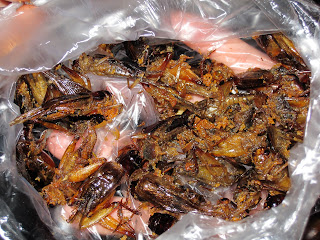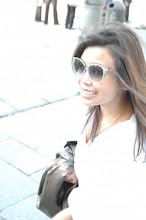
An old saying in Cambodian culture is, “Kom yeh daem khey,” meaning, don’t talk behind other people’s backs, especially if they are your mother or father. When I began writing my memoir, my mother infiltrated every chapter, paragraph and word of my work. It was as if I was watching her life and mine play on a screen that only I could see. During the time I was writing and when I lay in bed at night staring at the shadows above me, these were the only images I saw. Still, I write of her and have been writing of her during the past months I’ve been in Cambodia. And if I don’t write about her, if I prevent myself from doing so, it is as if she lingers daring me to write her name. Perhaps I am weak because I have not limited myself. I haven’t the strength not to write of her, and so I’ve filled over a hundred pages with her name and face and stories. She has never read any of these pages. I hide them like I would hide birth control pills or pot, stashed underneath desks and wedged between old books. Even though I hide them, her spirit watches me. She is a living ghost, tugging at my pages, chiding me for talking behind her back.
My mother will join me in 36 hours here in Phnom Penh, her homeland.
As I was messaging with my brother on the Internet today, he asked me, “Are you excited to see Mom?”
“Kind of,” I replied, thinking it was a normal and fairly accurate answer.
“Why wouldn’t you be excited?” he said. I stared at the computer screen, not knowing what to say. I thought for a few moments, and still, I couldn’t pin down any reason as to why I wouldn’t be excited for my mother’s arrival. I hadn’t seen her since I left home in early December. I missed Christmas, and New Year’s, and will miss her birthday, for god’s sake. Why wouldn’t I be excited?
I lied, still confusedly staring at my Gmail box, “I don’t know. She’ll probably want to see me all the time, and I need to work, get stuff done.” I knew it was a matter bigger than my mother wanting to spend quality time with me.
My mother was born in Phnom Penh in 1959. But from what I’ve overheard, it might’ve been 1957. She insists that it is the former, making her 51 years old as of tomorrow, January 28th. She is aboard a plane from Denver to LA, and will fly from LA to Taipei, making her way to Phnom Penh. My mother didn’t leave this country; she fled it. I wonder if she ran on foot, or laid in the carriages of the big oxcarts that I see in the streets used to transport wood and water basins from the countryside. Did she step on bloated bodies? Trip over misplaced arms and legs? When she tells me she was lucky during the civil war because harm was never committed against her, did she lie, thinking that she was protecting me?
I am an expert liar, a trait that perhaps I’ve inherited from my mother. “Do you love me?” asks a boy. “Yes,” I say with confidence, not knowing what love, or like for that matter, even is. My mother is a traditional Cambodian woman that divulges little. Having a quiet tongue, she knows when to speak and when to keep silent. Most of the time, she is silent. Sometimes, I feel like I cannot fully know my mother. Can anyone ever fully know anyone or themselves for that matter?
Cambodians might call me nyak chong dung, a nosy person who pries into others’ affairs. Am I prying if it is my own mother’s life? My mother is a part of me, as much as I am a part of her. I am not prying. I want to know my mother’s history. I want to see the house she grew up in, but since it was torn down after the civil war, I want to see the land and stand on it. I want to visit where my grandparents died, and might be buried. I want to light incense sticks and kneel on the dirt and pray for them. I want to see where my mother went to school and where she went to the market. I want to share fried bananas with her. I want to roam voung with her, and bend my hands backwards and step gracefully to the soft beats as she does.
What if she doesn’t want to visit her old home? What if she hates the heat because she has grown to love the Colorado cold? What if she is disgusted by the market stalls, the clouds of flies, the stench of sewage and burning trash? What if she hates the cold showers and can’t bear sitting on floors to dine? I suppose these what-if questions are always pointless and circuitous.
Maybe ten years ago, my mother’s youngest brother Phourin came to visit Cambodia. It was his first trip back to the country since he’d left in 1980. When he arrived here, he had a heart attack. He died. I thought my mother would never want to go back to her home country after Uncle Phourin’s death. I thought she blamed the country for all the bad memories it stirred up in her brother and for sucking him back after he managed to escape. Surely, she believed it was the shock of being in his homeland that killed him. But maybe she thought differently. Maybe she doesn’t believe that Phourin’s death was due to trauma. Maybe it was due to things like high blood pressure and cholesterol levels—physical things. Or maybe, one set off the other.
My mother’s family has a history of heart disease. My mother’s medicine cabinet looks like a pharmacy. She frequently complains of body aches, headaches, numbness, and heart palpitations. Sometimes, I accuse her of being a hypochondriac. And then, I feel these same symptoms, and can’t help but think that she is cursed, and so I must be, too. She was unharmed thirty years ago, but the Khmer Rouge cadres followed her to America, making sure she got her share.
Am I excited to see my mother? Yes, but I’m also fucking scared as I’m sure she is. I should not be scared of how she might react. I should not be afraid that she will shed tears. She should shed tears. I should not be afraid that I will not know what to say at the right moments. I should know when to speak and when to keep silent. I should not be afraid of many things for my own sake, and yet, I am. It is my human weakness.
I wrote this poem about my mother a while ago. I am not a good traditional Cambodian girl. I cannot shut up and keep silent.
Mother
I fear when your silence might cease:
The tap tap tap of your Singer sewing machine,
The flickering of the television screen,
The whoosh of the washing machine,
The clink clank of china and glass,
Soft slippers like velvet on floors,
The smell of Gucci Red and Gaultier:
Luxurious, strong, and rich,
Moth balls seeping into St. John suits:
Royal blue, red, and turquoise,
Shiny Ruby rings and Sapphire pendants,
Emerald things, like Egyptian ornaments,
Your body milk and honey bubble baths,
And cold drafts blowing through cracked doors,
And fans twirling like helicopter wings,
The drone of a blender,
Night sleep walking and screaming.
The heel-toe trickle of pointy-toed pumps,
Over-baked chicken, tough on the tongue,
Mint leaves and ginger, liver, heart, lung.

















